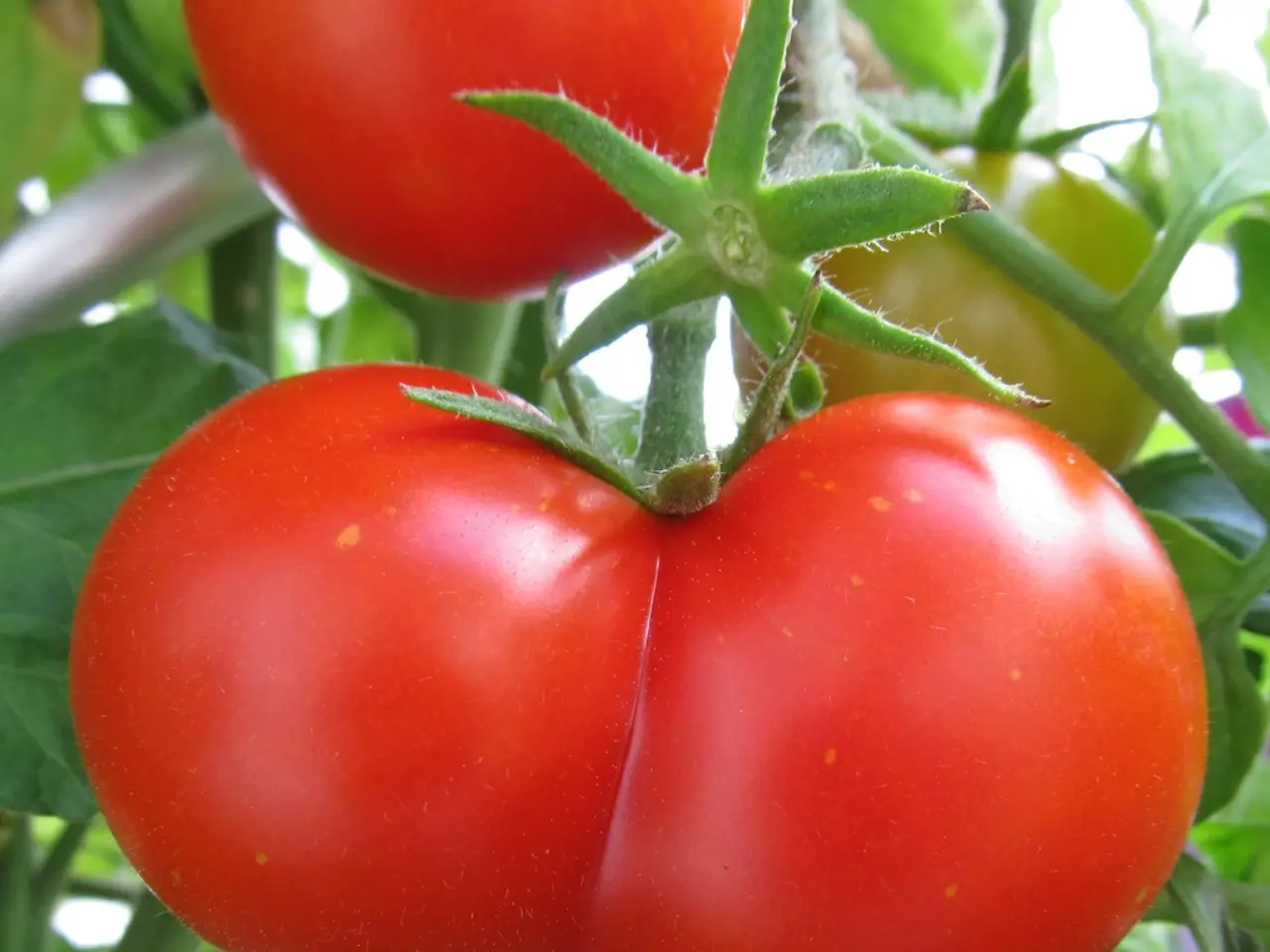Enhancing Tomato Production: 7 Masterful Techniques for a Quintessential Crop Haul
Growing High-Yielding, Disease-Resistant Tomato Plants
Tomatoes are a beloved staple in home vegetable plots, valued for their versatility and flavour. To ensure a bountiful harvest, it's essential to employ effective growing techniques. Here are some key practices to help you cultivate high-yielding, disease-resistant tomato plants.
Start with Disease-Resistant Varieties
Choosing high-yielding, disease-resistant tomato varieties is the first step towards a successful crop. By selecting tomatoes that are resistant to common diseases, you can ensure healthier plants and better yields.
Harden Off Seedlings
To prepare your seedlings for the outdoor environment, gradually expose them to outdoor conditions over 7–10 days. This process, known as hardening off, helps your seedlings adjust to the changes in temperature, light, and wind, reducing the risk of transplant shock and promoting stronger growth.
Plant Tomatoes Deeply
Planting tomatoes deeply, burying stems up to the second set of leaves, can result in a stronger root system. Tomatoes develop roots along buried stems, leading to a more stable plant and improved nutrient absorption.
Space Plants Adequately
Proper spacing is crucial for tomato plants. Ensure that plants are spaced at least 2 to 3 feet apart, providing sufficient air circulation and sunlight exposure. This helps reduce disease incidence caused by overcrowding.
Provide Sturdy Support
Supporting tomato plants with stakes, cages, or trellises early after planting prevents branch breakage and improves air circulation. Keeping foliage dry can help reduce fungal diseases.
Water Consistently and Carefully
Watering consistently and carefully is vital for tomato plant productivity. Avoid wetting the foliage to minimize fungal infections like blight and septoria. Instead, water should be applied directly to the base of the plant. Consistent soil moisture helps prevent issues like fruit cracking, especially in heirloom varieties.
Use Nutrient-Rich Soil
Using nutrient-rich, well-draining soil with organic matter and compost supports vigorous growth and fruit development. Incorporating bone meal or tomato-specific fertilizer helps provide calcium and other nutrients essential for fruit set and preventing disorders like blossom end rot.
Practice Crop Rotation
Annual crop rotation helps reduce pest and disease buildup in the soil, enhancing long-term plant health and yields. By rotating crops, you can break the life cycle of pests and diseases, ensuring a healthier growing environment for your tomatoes.
These practices combine to promote vigorous tomato plants capable of producing abundant, healthy fruit while minimizing disease problems and environmental stresses. With a little care and attention, you can enjoy a bountiful tomato harvest all season long.
[1] Griffiths, M. (2021). The Essential Guide to Growing Tomatoes. London: Mitchell Beazley.
[2] National Gardening Association. (2021). Tomato Growing Tips. Retrieved from https://www.garden.org/learn/howto/tomato/
[3] University of California, Davis. (2021). Tomato Nutrient Management. Retrieved from https://ucanr.edu/sites/Tomato/Nutrient_Management/
[4] Cornell University. (2021). Tomato Fruit Cracking. Retrieved from https://vegetablemdonline.ppath.cornell.edu/vegetable-diseases/tomato/tomato-fruit-cracking/
[5] Pennsylvania State University. (2021). Crop Rotation. Retrieved from https://extension.psu.edu/crop-rotation
- To further complement the nourishment for your tomato plants, delve into cooking using home-grown tomatoes, creating a harmonious food-and-drink and lifestyle experience.
- Transitioning from the garden to the kitchen, Tomato and Basil Recipes can excellently showcase the fresh produces from your home-and-garden, engendering a sense of accomplishment and enjoyment.
- With an abundance of home-grown tomatoes and the satisfaction of cooking, consider the rewarding activity of starting a compost pile using organic matter and vegetable scraps in your home-and-garden to promote healthy plant growth and reduce waste in your food-and-drink lifestyle.




